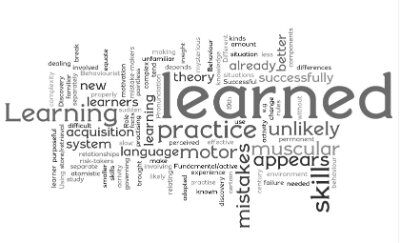

Machine learning is a type of artificial intelligence that takes vast amounts of data and makes sense of it. Many businesses have started turning to machine learning as a way to sort through their collected data, streamlining their work and improving the customer experience.
Spam Detection
A way machine learning is being put to use is one that you may already be familiar with. When using email, you’ve likely come across spam email. But how do programs like Gmail and other sites identify pieces of email that are irrelevant to the consumer? Through machine learning, the program’s algorithm is modifiable to better detect a piece of spam mail. The program receives input from the email user, causing it to adapt to whatever is tagged as spam. With enough input from enough users, the program can then filter out spam mail with greater accuracy.
Relevant Marketing
Businesses are also using machine learning to better connect with customers through advertising and marketing. You may have experienced situations where you’ve gotten bombarded with messages both online and through regular mail from businesses you associate with, like credit card companies and banks. Most of these messages are irrelevant to the customer, but the businesses send them out anyway. What this implies is a lack of collaboration among the different business divisions that are each sending you messages. Machine learning is able to take the data you have input in relation to the business and better collaborate with different systems and employees to make sure that the messages you receive are both relevant and timely.
App Experience
Companies have also turned to machine learning to improve the customer experience on your smartphone or tablet. They’ve put machine learning into practice to observe a person’s behavior while using apps, and from there, it can predict that user’s interests. From those predictions, the program can then recommend items the user might want to purchase.
Predicting Interests
Those same predictive qualities are already being used in other internet businesses. Facebook takes input from millions of people, and through machine learning is able to recommend connections with individuals you might know, or might want to get to know. Netflix takes the same approach, only by finding specific movies and genres that interest you. Google takes your entire web history and activities and is able to tailor the ads you see in the sidebars and on the search engine to products you might be interested in buying. This more personalized approach requires sorting through vast amounts of data.
Health Care
The predictions that come from machine learning are also making big changes to health care companies. Some businesses and organizations are using machine learning to predict future wait times in emergency waiting rooms. These programs take into account a number of variables and data, including staffing levels, emergency room layouts, and patient data.
Deleting Data
Since data is so crucial to businesses, storing that data is highly important. But the amount of data now collected is enormous. Managing and storing that much data costs money and clogs networks. Simply deleting the data isn’t a solution, since businesses don’t want to get rid of potentially vital information. Luckily, machine learning provides a solution. Business can use predictive coding from machine learning to identify the data that’s safe for deletion, while keeping everything that’s important. The result is a more streamlined operation, more room for storage, and less cost for maintenance.
Flash Storage vs. Hard Drive
Even with unnecessary information gone, there’s still a lot of data to be stored and processed. That’s why many companies are turning to flash storage vs. hard drive as the answer. With no moving parts and easily reprogrammable features, flash storage has several unique advantages over traditional hard drives. It offers much faster processing speeds to churn through all that data being collected by businesses. Flash storage systems are also more durable and don’t require as much power consumption.
These are just a few examples of how businesses are making machine learning work to help their customers. Companies are only starting to truly utilize this relatively new technology. Big advances are expected in the next few decades, so machine learning will likely be part of almost every business in the near future.
Image Source: Flickr